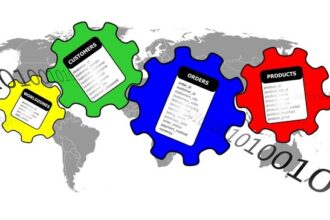Building Real Customer Relationships from Reward-Based Flings
A loyalty program should not be about points, rewards, or status. While these perks may attract consumers, they don’t foster loyalty. The focus of these programs should be to collect useful data that can be used to build relationships that benefit both the consumer and the brand.
Building Real Customer Relationships from Reward-Based Flings
A loyalty program should not be about points, rewards, or status. While these perks may attract consumers, they don’t foster loyalty. The focus of these programs should be to collect useful data that can be used to build relationships that benefit both the consumer and the brand.
“Useful” is the key here—because consumers don’t really care about keeping a business’ data clean and relevant. It’s no secret that everyone has, at one point or another, probably fibbed about their age on a loyalty sign-up form. Or opted not to answer survey questions, provided incorrect data on purpose or mistakenly, or given their never-checked, spam-dump email address as contact information. Any business that trusts consumer-provided data implicitly is a business that’s making decisions based on what is essentially random information.
Consider this: U.S. consumers are enrolled in an average of 10.9 loyalty programs according to the 2014 Bond Brand Loyalty Report, but a recent Nielsen survey found that 78% of consumers say they are not loyal to a particular brand.
Customers may be members of loyalty programs, but they are obviously not engaged with the brands. They enjoy the transactional benefits of loyalty programs—but if another brand offers them a better deal, well, don’t expect “loyalty” to be a factor in their purchasing decision. And why should it be? If a brand is competing only on price points, its so-called relationship with a consumer is really no more than a brief fling.
Big Data Provides the Differential
Marketers agree that highly targeted campaigns are most likely to result in conversions, retention, or other desired outcomes. To do this, you obviously need to have the data that allows you to segment the customer base, provide relevant calls to action and/or rewards, and deliver the services and products that the brand’s customers identify as important.
But that brings us back to the ever-present problem: Where does the trustworthy data come from if we can’t count on consumers to provide it? The answer: from observation of customer activities and preferences in tandem with external data sources. Advanced analytics can then piece together a very accurate profile of the customer—one that enables more precise segmentation.
There’s no such thing as too much data when it comes to this sort of analytics work. Every business analyst and data scientist agrees that expanding the data for any given model will typically produce dramatic improvements in analysis. And that data will obviously come in a wide variety of formats—structured, semi-structured, and unstructured, big and small, near and real-time, as well as historical.
Try to store it all in a traditional data warehouse, and you may wipe out all of the profits gained from segmentation. You will almost certainly have availability issues, and you will spend a lot of time waiting for IT to massage the data into a form that can be analyzed. That’s why many organizations have turned to Apache Hadoop to power a Big Data solution.
Hadoop is a massively scalable distributed storage and processing platform that enables Big Data applications for both operations and analytics. It is a key component of the next-generation data architecture, providing organizations with the ability to build agile new data-driven applications and store data at 1/10 to 1/50 the cost on a per-terabyte basis.
Hadoop enables enterprises to capture and store data from every touchpoint in an organization while eliminating the need for separate silos to transform, cleanse, analyze, and score data.
With Hadoop, a business can bring structured, unstructured, and semi-structured data sources together in one platform to perform deeper and richer analysis that can provide real 360-degree views of both transactions and interactions. Hadoop also supports a number of best-in-class data analysis tools that enable self-service data discovery, providing actionable insights and timely business intelligence.
Define and Reward Real Loyalty
Building a loyalty relationship with just 5% more customers leads to an increased average profit per customer of at least 25%, according to “The Loyalty Effect: The Hidden Force Behind Growth, Profits, and Lasting Value” by Frederick F. Reichheld. A BIA/Kelsey study showed that a repeat customer spends 67% more than a new one.
But loyalty programs don’t just drive repeat business; they can also reveal what type of loyalty the business wants to foster. Repeat business based on price point may or may not be a brand’s ideal customer depending on the brand’s positioning. Some brands may choose to reward influencers, while others focus on return business or spend. Once a brand has segmented its base, it can identify those customers that it wishes to cater to and develop effective strategies and differentiated experiences based on what Big Data reveals about their preferences and profiles.
Using this intelligence, companies can move forward with confidence to build a customer loyalty program tailored to benefit the business and its most valuable customers. Big Data and Hadoop are a game-changer in the loyalty space, creating a measurable win-win solution for all involved.








